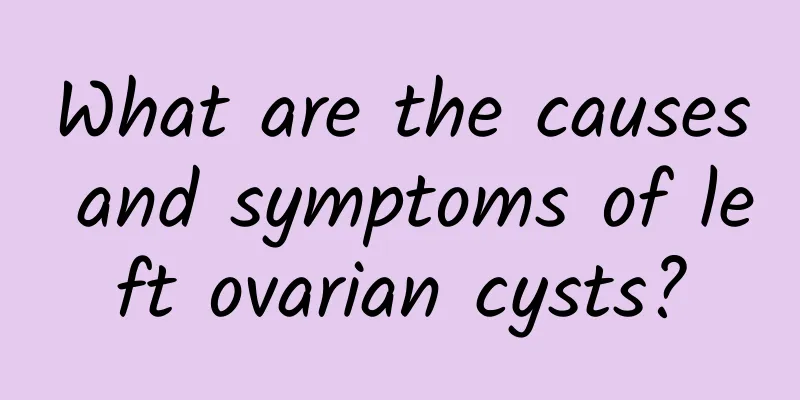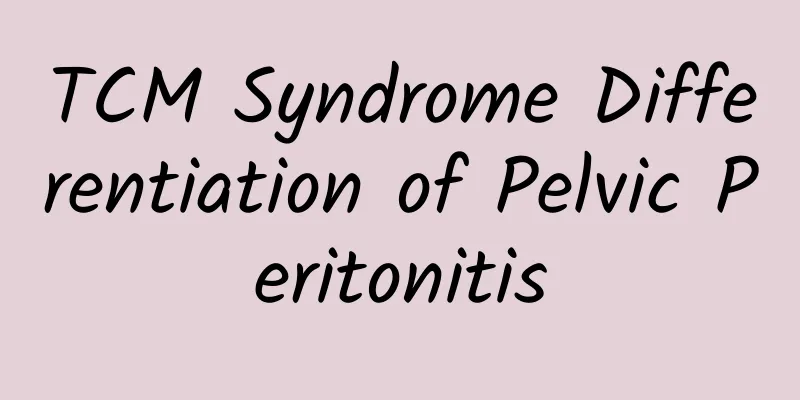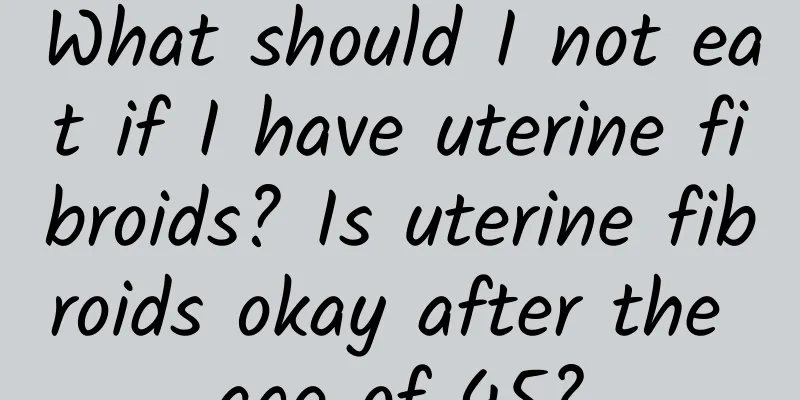What are the causes and symptoms of left ovarian cysts?

|
Ovarian cysts usually occur in different places in different patients, some on the left and some on the right. So, what are the causes and symptoms of left-sided ovarian cysts? Left ovarian cyst causes: 1. Qi and blood stagnation during menstruation or after childbirth. Coldness causes stagnation. Or internal injury, depression, liver damage, poor qi movement, qi stagnation, blood stasis. If blood stasis lasts for a long time, it will turn into cancer. 2. Phlegm and blood stasis condense and worry the spleen, spleen deficiency produces phlegm, phlegm and fluid stagnation block the Qi, leading to Qi stagnation and blood stasis, phlegm and fluid and blood stasis clump together. Long-term accumulation of phlegm and blood stasis will lead to cancer. The main symptoms of left ovarian cysts are: 1. Ruptured or ruptured ovary The former refers to the swelling or squeezing of the cyst, and its contents overflowing into the abdominal cavity; the latter refers to the erosion of the cyst wall by the cyst and entering the abdominal cavity, such as serous cystadenoma or cancer papillary protrusions that penetrate the tumor wall. The rupture rate of ovarian tumors is about 3%, and malignant teratomas are most likely to rupture. Spontaneous rupture is more common. Due to rapid growth, the local blood supply of the cyst wall is insufficient, and the incremental cystic fluid ruptures from the weak part of the cyst wall and overflows into the abdominal cavity. Different tumor contents can cause different consequences in the abdominal cavity. In these cases, it can cause comminuted inflammation, intestinal adhesions, and even intestinal obstruction. 2. Tumor pedicle torsion About 10% of ovarian tumors torsion. The conditions for ovarian tumor pedicle torsion are that the tumor pedicle is long, the tumor is as big as a fist or a fetal head, there is no adhesion to the surrounding tissue, and the tumor is easy to move in the abdominal cavity. Cystic teratomas, mucinous and serous cystadenomas are most likely to have pedicle torsion. The pedicle of this type of tumor is generally long, and the center of gravity is biased to one side. The tumor is easily rotated by intestinal peristalsis or changes in posture. |
>>: What are the early symptoms of ovarian cysts and what are the dangers
Recommend
Five aspects to understand the typical symptoms of uterine fibroids
Due to the influence of environment and life, gyn...
Helps lose weight! Spicy coriander and black fungus detoxification and weight loss
[Black Fungus: Nourishes Yin and the Stomach + Re...
Eat this for low-calorie diet! Pumpkin nut rice is delicious
Modern people are so busy with work that they hav...
What are the nursing care for acute pelvic peritonitis
Many women suffer from pelvic peritonitis, which ...
The temptation of "Chu Yao"! Talking about Abdominoplasty (Part 2)
Farewell to the belly Not every pregnant woman ca...
What factors can delay menopause in women?
Every woman hopes that her menopause will come la...
What medicine is good for severe cervical erosion? Try Chinese medicine for severe cervical erosion
The harm of severe cervical erosion is relatively...
Should I lie down more or walk more for pelvic effusion?
If the pelvic effusion is serious and the patient...
Overview of modern research on recurrent spontaneous abortion
Recurrent spontaneous abortion is a heartbreaking...
Can I get pregnant with uterine fibroids?
Women with uterine fibroids can get pregnant, but...
Motherwort diet therapy is effective in treating irregular menstruation
Motherwort is a traditional Chinese medicine that...
To prevent dysmenorrhea, we must take good measures
I believe that many women have dysmenorrhea durin...
How to use a menstrual cup
Menstrual cups are an environmentally friendly an...
The difference between adnexitis and pelvic inflammatory disease
Adnexitis and pelvic inflammatory disease are two...
Introduction to several effective dietary treatments for irregular menstruation
Diet therapy is a safe and reliable treatment for...









